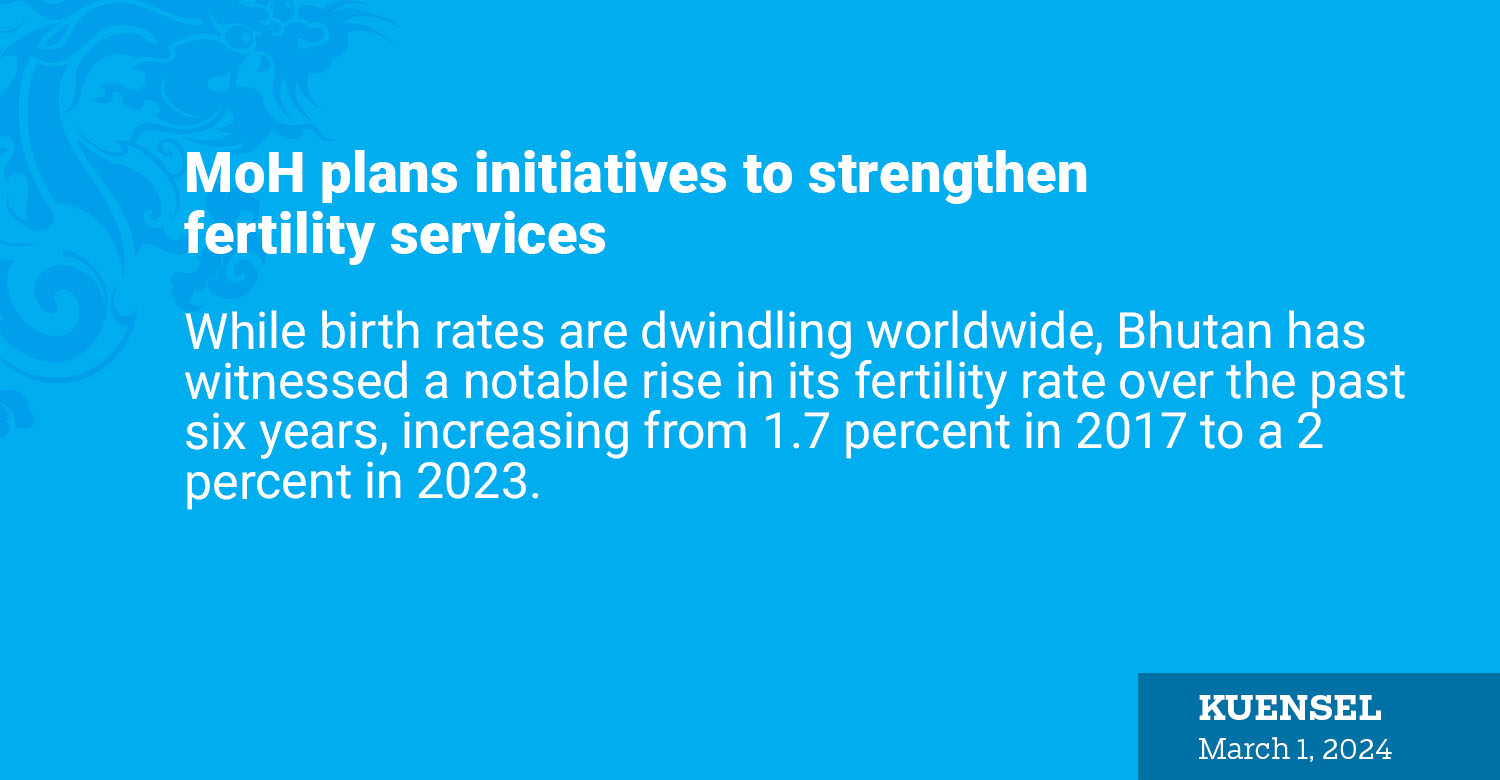Sherab Lhamo
While birth rates are dwindling worldwide, Bhutan has witnessed a notable rise in its fertility rate over the past six years, increasing from 1.7 percent in 2017 to a 2 percent in 2023.
“This is a big jump,” acknowledged Prime Minister Tshering Tobgay. However, the Lyonchhoen warned of complacency. “The danger is that it (birth rate) might plummet, and we must prepare for that. We must ensure that our fertility and family planning policies address these challenges.”
The health ministry has planned several programmes to strengthen fertility services including introducing In vitro fertilisation (IVF) in Thimphu.
At the first meet the press session yesterday, the Prime Minister shared that he has requested UNFPA for assistance in starting the IVF program at the national referral hospital in Thimphu.
Promotion of preconception care in all health facilities and the implementation of comprehensive mother and child care programmes are on the agenda. The Gyaltsuen Jetsun Pema Wangchuck Mother and Child Hospital—a 150-bed facility initiated during the government’s first tenure is set to elevate healthcare services for women, mothers, and children across Bhutan.
A common health clinic dedicated to mothers and children is also underway in Mongar. This strategic move aims to ease the burden on the JDWNR hospital.
A trend
Will government interventions help raise the birth rate? No, going by the current trend of restricting to two children.
The Prime Minister also shared that some couples now adays get married and are not raising kids.
The replacement rate in the country has not reached the minimum threshold of 2.1 percent, as it currently stands on 2 percent.
Birth rates dropped to 1.866 births per woman in 2023, marking a 1.43 percent decline from the previous year. A silent cliché is a family of four, meaning parents feel two children is more than enough.
Parents Kuensel talked to said that it will be a challenge to raise more than two children. This is common among young and working couples. Prospects of jobs, the cost of living and raising children, many say is the deciding factor.
The Druk Nymrup Tshogpa government approved a programme in 2019 called tthe Accelerating the Mother and Child Health Programme (AMCHP).
This programme aims to provide eligible mothers with Nu 39,000 each, starting from the day of conception until the child reaches two years of age. The programme, while not aimed to increase birth rate, was targeted at supporting a child’s crucial first 1,000 days of life.
Observers said that working Bhutanese are delaying marriage or planning children. “The trend is two children,” said a father of two. “There are several challenges in raising a child when both parents are working,” he said.
If the number of people getting married is any indication, courts in the country issued 10,196 marriage certificates in 2023 alone. However, the surge in marriage certificates is attributed to Bhutanese migrating to live and work abroad.
“How many will settle down and have children? Some certificates will be just a paper as soon as they reach the destination,” said one.


